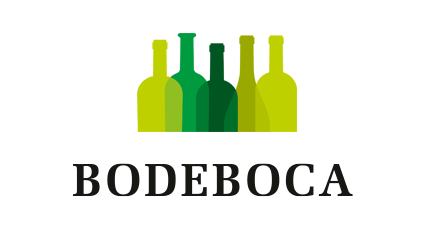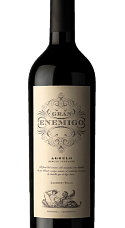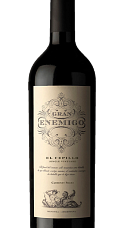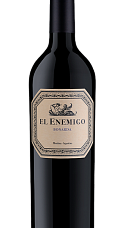Gran Enemigo Gualtallary Single Vineyard 2011
Descripción
Este vino, uno de los grandes de la región de Gualtallary, en el argentino Valle de Uco, nace a nada más y nada menos que 1.470 metros de altitud. Realiza un añejamiento de 7 meses en foudre y se muestra con una textura muy fina, un largo posgusto y sabores casi cítricos con un final salino. Según Luis Gutiérrez, es más complejo que en la añada 2010.
Ficha técnica
Cata
Viñedo y elaboración
Opinión de los críticos
The 2010 was a hard act to follow, and the 2011 Gran Enemigo Gualtallary Single Vineyard had to fulfill great expectations. There is less color in this 2011 (I popped a bottle of the 2010 for comparison) and more notes reminiscent of Cabernet Franc (Alejandro Vigil harvested even earlier in 2010), because it is mostly Cabernet Franc from a very chalky vineyard in Gualtallary at 1,430 meters altitude that fermented together with a small percentage of Malbec. 50% of the volume was fermented with destemmed Cabernet Franc and full-cluster Malbec. The grapes from the most calcareous soils underwent a carbonic maceration in small bins, and after one week they are pressed and the juice finishes fermenting as if it were a white wine. The texture is very fine and the acidity seems like if it had a timer and shoots a second later than you expect it, creating a small explosion in your taste buds. That provides a very long aftertaste and almost citric flavors with a mineral, almost salty finish. At the end of the day this feels lighter but at the same time more complex than the 2010. If you want to understand what Gualtallary can do, find a bottle of this wine. It's drinkable now, but it should have a long life in bottle. At this quality level the price seems too good to be true. Unfortunately, only 3,400 bottles were produced.
This is a pure expression of the grape. Herbal notes covered by crunchy red fruit flavours with tension and texture. A refreshing and vivid wine.









Añadas: 2020 2019 2018 2011
100 PUNTOS BIEN MERECIDOS
Por una vez estoy de acuerdo con las puntuaciones. Este vinazo lo tiene todo y siendo un bebé todavía es un fuera de serie.
Esta añada no tiene valoraciones todavía. Pincha en las otras añadas para ver sus valoraciones.